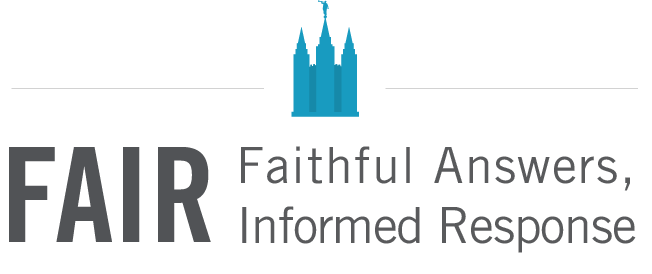
FAIR is a non-profit organization dedicated to providing well-documented answers to criticisms of the doctrine, practice, and history of The Church of Jesus Christ of Latter-day Saints.
Summary: Although this document purports to have been published in 1839 by Oliver Cowdery, the earliest copies in existence are dated 1906. The document was "discovered" by the Reverend R. B. Neal, who was a leader in the American Anti-Mormon Association. No references to this document exists prior to 1906. This document was believed to be authentic for many years, until it was discovered that it consists primarily of a selection of Cowdery's phrases taken from various issues of the Latter Day Saints' Messenger and Advocate that were removed from their original context and placed in a different context. A number of talking points appear to have been reworded from David Whitmer's 1887 An Address to All Believers in Christ. Historians now agree that this document is a forgery.
Jump to details:
Summary: It is claimed that Oliver Cowdery admitted to his law partner that the Book of Mormon was a hoax, and that it was derived from the Spalding manuscript.
Jump to details:
Summary: Oliver Cowdery was a distant cousin of Joseph Smith, Jr., although they had never met before Oliver arrived to assist with the Book of Mormon translation. Does this relationship damage Oliver's credibility as a witness to the Book of Mormon?
Jump to details:
Summary: It is claimed that a revelation received by Joseph praised Oliver Cowdery's gift of using divining talents. It is claimed that the revelation was published in the Book of Commandments in its original form, then subsequently modified in the Doctrine and Covenants in order to hide the reference to the "rod of nature." Therefore, it is claimed that Joseph attempted to "cover up" Oliver Cowdery's work with a divining rod by changing a revelation. Critics also claim that Oliver would ask questions of his divining rod in faith and it would move in response.
Jump to details:
Jump to details:
In 1834, Oliver Cowdery began publishing a history of the Church in installments in the pages of the Latter Day Saints’ Messenger and Advocate. The first installment talks of the religious excitement and events that ultimately led to Joseph Smith’s First Vision at age 14. However, in the subsequent installment published two months later, Oliver claims that he made a mistake, correcting Joseph’s age from 14 to 17 and failing to make any direct mention of the First Vision. Oliver instead tells the story of Moroni’s visit, thus making it appear that the religious excitement led to Moroni’s visit.
This curious account has been misunderstood by some to be evidence that the “first” vision that Joseph claimed was actually that of the angel Moroni and that Joseph invented the story of the First Vision of the Father and Son at a later time. However, Joseph wrote an account of his First Vision in 1832 in which he stated that he saw the Lord, and there is substantial evidence that Oliver had this document in his possession at the time that he wrote his history of the Church. This essay demonstrates the correlations between Joseph Smith’s 1832 First Vision account, Oliver’s 1834/1835 account, and Joseph’s 1835 journal entry on the same subject. It is clear that not only did Oliver have Joseph’s history in his possession but that he used Joseph’s 1832 account as a basis for his own account. This essay also shows that Oliver knew of the First Vision and attempted to obliquely refer to the event several times in his second installment before continuing with his narrative of Moroni’s visit.
On Sunday, 12 November 1848, apostle Orson Hyde, president of the Quorum of the Twelve and the church's presiding official at Kanesville-Council Bluffs, stepped into the cool waters of Mosquito Creek1 near Council Bluffs, Iowa, and took Mormonism's estranged Second Elder by the hand to rebaptize him. Sometime shortly after that, Elder Hyde laid hands on Oliver's head, confirming him back into church membership and reordaining him an elder in the Melchizedek Priesthood.2 Cowdery's rebaptism culminated six years of desire on his part and protracted efforts encouraged by the Mormon leadership to bring about his sought-after, eagerly anticipated reconciliation. Cowdery, renowned as one of the Three Witnesses to the Book of Mormon, corecipient of restored priesthood power, and a founding member of the Church of Jesus Christ of Latter-day Saints, had spent ten and a half years outside the church after his April 1838 excommunication.
Oliver Cowdery wanted reaffiliation with the church he helped organize. His penitent yearnings to reassociate with the Saints were evident from his personal letters and actions as early as 1842. Oliver understood the necessity of rebaptism. By subjecting himself to rebaptism by Elder Hyde, Cowdery acknowledged the priesthood keys and authority held by the First Presidency under Brigham Young and the Twelve.

FAIR is a non-profit organization dedicated to providing well-documented answers to criticisms of the doctrine, practice, and history of The Church of Jesus Christ of Latter-day Saints.
We are a volunteer organization. We invite you to give back.
Donate Now